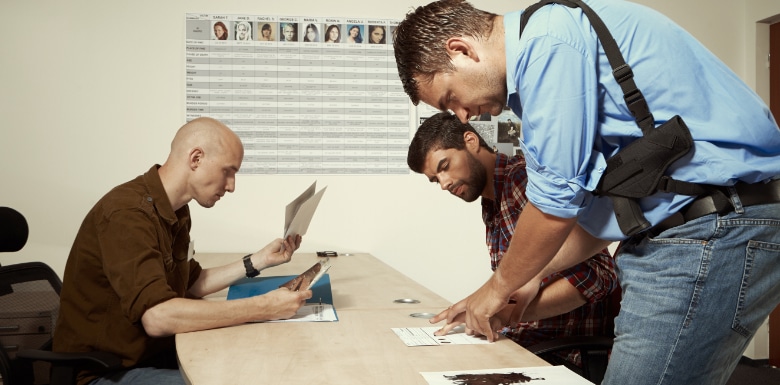
The “chain of custody” comes up a lot in Ohio criminal cases. This is essentially the path that a piece of evidence takes from the point it’s seized to when it’s introduced in court.
As you might expect, several people will come into contact with evidence as it moves through the criminal process. However, not all of them are motivated to serve justice. It’s not uncommon for officials to slant evidence or otherwise ignore their legal duty to protect it. This is a violation of your rights and mishandling evidence can be cause to have that item suppressed.
You can’t get a fair trial when there are issues with how the evidence is preserved, analyzed, or handled. At Luftman, Heck & Associates LLP, our Columbus criminal defense lawyers have in-depth knowledge in evidentiary procedure and can identify when errors have been made.
If there are inconsistencies, we’ll expose them and attack the allegations. Call (614) 500-3836 to schedule a no-cost consultation, and check out our overview on common chain of custody issues.
Chain of Custody Legal Issues
The journey of evidence through the criminal process is crucial because it concerns how the prosecutor pursues charges against you. For the prosecution to introduce an exhibit and get a ruling in their favor, there must be some foundation. In other words, the item must be what it purports to be and hasn’t been altered before making it into the courtroom.
The chain of custody refers to who had possession of the exhibit. It starts when officers seize it and continues through your case. Anyone who handles or examines the item should be documented, and disruptions are broken links in the chain.
There may be grounds to contest the admissibility of the evidence if the exhibits have been modified, tarnished, or disturbed in some way. If the exhibit is not admissible, the prosecutor may not have sufficient evidence to prove that you’re guilty beyond a reasonable doubt.
How Chain of Custody Issues Arise
To understand these evidentiary issues, you might find it helpful to review how chain of custody works in certain criminal matters.
Drunk Driving Charges
When you’ve been arrested for Operating a Vehicle Under the Influence (OVI), one key point may be whether your blood alcohol concentration (BAC) was above the legal limit. Chemical tests are usually the source of this information, typically through samples of your breath, blood, or urine.
Once police have possession and control over these substances, the chain of custody for your Columbus DUI test begins. If a link is broken, that evidence may become inadmissible at your trial.
The procedure for getting the test results tossed out of court is very complicated, so you should trust your attorney to handle having evidence suppressed. When the court grants a motion to suppress in a Ohio OVI/DUI case, the charges against you could be dismissed.
Ohio Drug Crimes Cases
The chain of custody is similar in Ohio drug offenses. An effective example is in drug possession cases, where the prosecutor must prove that the substance was illicit. In addition, they must demonstrate that the substance came from what was in your possession when police seized it.
To establish the evidentiary chain, the prosecution must show:
- The officer who seized the drugs marked it in a way to make it distinguishable from similar items seized from other individuals; and,
- The drugs were transported, tested, and stored through methods that ensure it remained intact pending the trial date.
Violent Crimes and Sex Offenses
Physical evidence is essential in these cases, so questions involving chain of custody often involve:
- A firearm or other weapon used in commission of a crime;
- Pictures and video purporting to show the victim’s injuries;
- Medical records regarding health care providers’ diagnosis and treatment of injuries;
- The rape test kit extracted after an allegation of sexual assault;
- DNA, fingerprints, or other trace evidence recovered from a crime scene; and,
There are chain of custody issues that come up in many other types of Ohio criminal cases, and an experienced lawyer can address them. Under most circumstances involving custody violations, the most effective approach will be filing a motion to suppress.
If the evidence is not admissible, the prosecutor’s case often falls apart.
Get Help from Our Columbus Criminal Defense Attorneys
When you’re facing a criminal charges in Ohio, you can’t allow disruptions in the chain of custody to adversely affect your rights. Inconsistencies can serve as a strong defense, and there may be other strategies for fighting the charges.
At Luftman, Heck & Associates LLP, we will pursue all available options to get the best possible outcome. Contact our firm to learn how we can help with your case. You can set up a free consultation by calling (614) 500-3836 or contact us online.

